The Golden Age of 1000 Islands Tour Boats
by: Tom King
Tourism became a booming business for the Thousand Islands region, in the 1870s, after the beauty of the area was publicized in the widespread media coverage following President Ulysses S. Grant’s visit in 1872. The following year the Rome, Watertown and Ogdensburg Railroad (RW&O) began daily train service to Clayton’s waterfront terminal, bringing trainloads of tourists wanting to see the natural beauty firsthand. In July of that same year, Colonel Owen G. Staples opened the “Thousand Island House” in Alexandria Bay with accommodations for 700 guests. The construction of several other large resorts in the area soon followed.
Many steamers were built in the late 1800s to ferry the large numbers of passengers from the train terminal in Clayton to other towns, such as Alexandria Bay, and the resorts on the mainland and on the nearby islands. Sightseeing excursions through the islands also rapidly grew in popularity, and this gave birth to the tour boat industry as we know it today.

The steamer “New Island Wanderer” operated in the Thousand Islands in the late 1800s.
When the gasoline-powered marine engine was introduced, early in the twentieth century, it didn't take long for local entrepreneurs, on both sides of the River, to embrace this new technology, and they were soon building up a sizable fleet of motorboats to serve the growing number of tourists flocking to the area. Soon afterward, there were tour boats operating out of Alexandria Bay, Clayton, Gananoque, Rockport, and Brockville, as well as some of the other small hamlets in the area.
Initially, most of the gasoline-powered motorboats used for the island tours were built with an open seating area, but, due to the need to run the tours in rainy or cool weather, they were either converted to covered boats or were built with an enclosed cabin as part of the design. These relatively narrow wooden single deck tour boats would be the workhorses for the industry right up to the 1960s, ferrying thousands of passengers through the islands and past all of the magnificent scenic highlights of the area.

There were several talented boat builders, both American and Canadian, who were responsible for building many of these lovely old craft. Family names such as Hutchinson, Duclon, Wilson, Fry, Cranker, Andress, Malette, and Hunt were just a few. Not many of these builders ran large operations, and the new boats were usually built by a small crew of men in some sort of a shed during the winter months, so that they would be ready for the peak summer tourist business the following season. Many of these old wooden boats underwent extensive modifications over the years as well – some were lengthened, others widened; many had new engines installed, and most had convenience upgrades, such as washrooms, installed at some point in time. Since the boats were constructed entirely of wood, they also required annual maintenance to make sure that there was no rot, damaged planks or major leaks, as well as having their paint jobs touched up.

In an excerpt from the book, “Of Time and an Island” author John Keats recalls a conversation with boat builder Ed Andress, about the new tour boat that was being built for the Rockport Boat Line and was to be chartered for Mr. Keats’ daughter’s wedding a few months later. As far as I can determine the boat that was being discussed was the “Ida M,” a rather uniquely designed vessel that was actually one of the last wooden tour boats built in the Thousand Islands. It was lovingly referred to as “the wedding barge” in the book. He wrote, “You’re building her upside down?” I wondered, looking at the vast hull in the cold and empty shed.
“Why, yes,” he said. “We’ll build her decks when we get her in the water.”
He explained that when the hull was built, they would slide her down the hill on rollers, with tractors astern to act as brakes, and they’d put her in upside down and turn her over in the River. It would be better to turn her in the water, Ed thought, than to turn her over on land, because when you had her weight on one gunwale, the land wouldn’t give, but the water would.
“Then we’ll pump her out and build her decks,” he said.”
After World War II ended, a couple of new additions to the Thousand Islands tour boat fleets signaled changes that were to come in the near future. In 1950, the “American Adonis” was converted from a surplus U.S. Navy crash boat into a double-decker “ultra-modern streamliner” by The American Boat Line and joined their fleet of traditional single deck boats running tours through the islands. This new vessel certainly raised the bar as far as style and comfort were concerned.

On the Canadian side of the River, Sedgwick’s Thousand Islands Boat Line put the “Miss Kingston,” a retired Royal Canadian Navy Fairmile minesweeper, into operation in the mid-fifties, running tours from Kingston. She became the largest tour boat on the River, at the time, and was very distinctive with her sleek design and double decks.
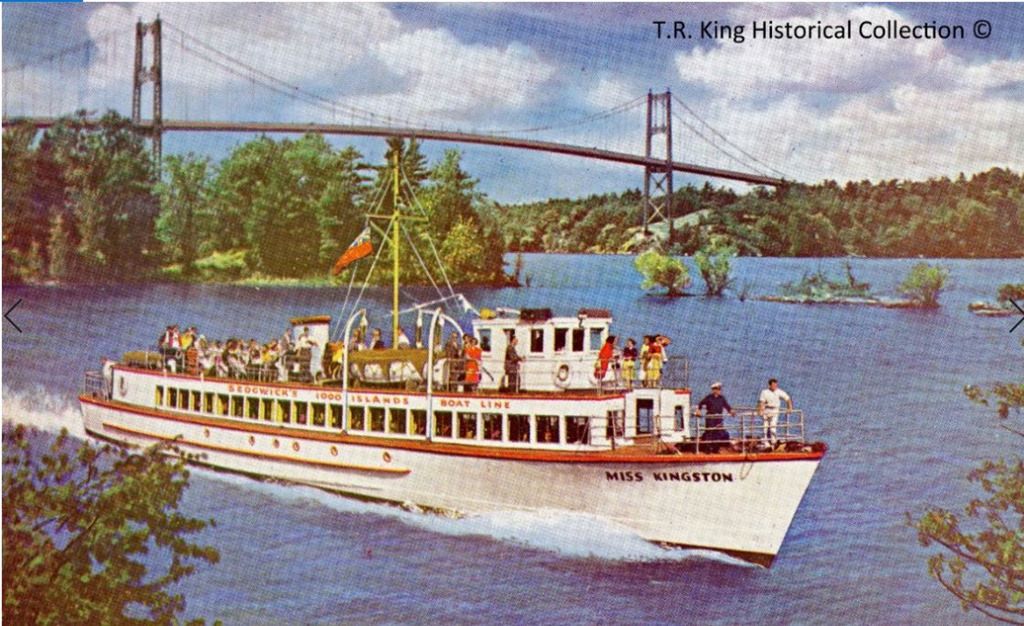
In 1960, the American Boat Line, once again, launched a new boat that would change the direction of the tour boat industry going forward. The “American Venus” was the first aluminum-hulled, double-decked vessel ever built for the local tour boat industry. Very few wooden tour boats were built after this point in time; double and triple-decked boats became the norm for the industry.

The naming of the tour boats generally followed the age-old nautical tradition of assigning a female gender to the boat. Several iterations of “Maxine,” “Edith,” “Gloria,” “Lynda,” “Julia,” “Elva,” “Helen” and “Sis” can be found in the record books, all paying homage to wives, daughters or other special females in their owners’ lives.
Many boats carried more formal names, such as “Miss Brockville,” “Miss Clayton,” “Miss Rockport,” “Miss Gananoque,” and “Miss Kingston,” obviously in deference to their home port. “Island Wanderer,” “Thousand Islander,” “Island Princess” and “Miss St. Lawrence” were obviously named as a tribute to the Thousand Islands region.
More fanciful names, such as “Nymph,” “Spray,” “Sun Dance,” “Jewel,” and “Shamrock” could also be found adorning some of the early vessels.
Patriotic names, such as “Uncle Sam,” “Commander,” “Liberty,” and “Pilgrim” were also very popular choices for several of the boats.
Some of the craft that didn’t follow the practice of using a female name included “Paul,” “Captain Adkins,” “Captain Cliff,” and “American Adonis.”
Over the years, several of the boats changed ownership and were renamed to suit the new owners’ plans for the vessels. According to the records, the “Islander II,” built in 1925, changed hands no less than 12 times over the years and subsequently carried the names “Spray VI,” “Miss Riveredge” and “Edith.”
Of course, none of the boat lines that operated these tour boats would have been successful if it weren’t for the efforts of all of the people involved in the businesses; right from the “hawkers”, who sold the tickets to the tourists, up to the owners, who kept the fleets operating and added new boats when the need arose.
Special among all of the employees, however, were the “captains,” who navigated these craft through all of the narrow channels and hidden passages around the islands, in order to give the passengers, the best possible view of all of the sights. Most of the captains were lifelong River men, who knew the waters like the back of their hand. One wise skipper, when asked by a passenger if he knew where all the rocks were, casually responded, “No!”. Taken aback, the worried tourist asked, “How can you be the captain of a tour boat if you don’t know where all the rocks are?” Without missing a beat, or taking his eyes off the water in front of him, the old captain replied, “I know where they aren’t! And that’s where we are goin’!”
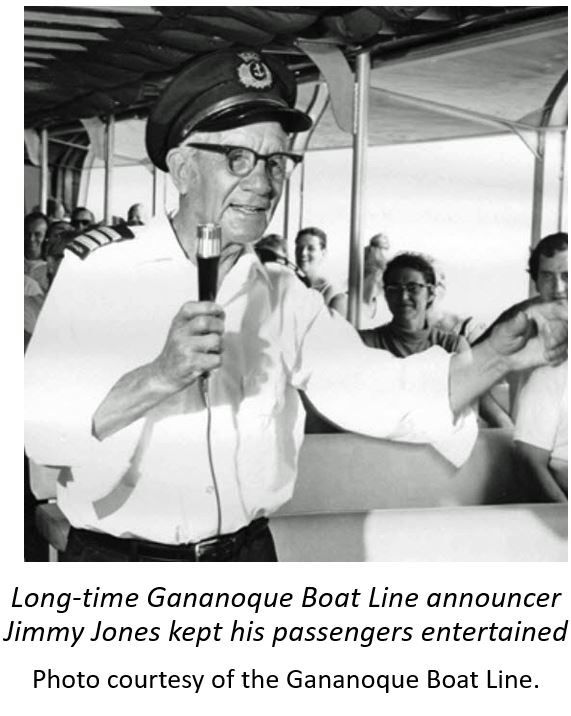
It was the announcer who the passengers had the most interactions with during their cruises. They narrated the trip and sold souvenir booklets and trinkets. Each announcer worked very hard to perfect their presentation, so that it contained as much up to date information about the various properties and natural attractions that the tourists would see on their trip. At this point in time, all of the announcers did their commentaries live – there were no recorded presentations on the boats yet.
It wasn’t unheard of to slightly embellish some of the “facts” to make the narrative more interesting for the passengers. One example of where the truth was stretched a little bit was in the description of the world’s shortest international bridge on Zavikon Island. The announcer would tell all the folks that the large island was Canadian and the smaller one, on the other side of the bridge, was American, with the border running right down between them. The owners of the island even flew Canadian and American flags to bolster the validity of the announcers’ claims. If you consult a navigational chart for the area, you will see that both islands are clearly in Canadian waters.
Paul Reilly, another Thousand Island tour boat operator, goes on to share some of the other jokes that would be told during the boat trips, in his article titled, “River Memories”, which appeared in the April 2010 issue of Thousand Islands Life. He wrote, “And the jokes we inherited, passed on down for Lord knows how many years! When passing across the foot of Mary Island, towards Zavikon, "If you look over the side you can see the international border on the bottom of the River. The coast guard paints it on the ice in the wintertime, it’s a special red lead paint, and when the ice melts in the spring, it sinks to the bottom." Invariably someone would perk up , "Oh yeah, I see it," and we'd wind up, "Oh, about that border, they say the fishing's great here, and they are right, we catch a boatload of suckers every time we tell that!" -or- about Sunken Rock Light House," the coast guard rents it out to newlywed couples in the summer, so the new bride can get some light housekeeping experience!" - or about the little island with the tiny house by Boldt Castle called "Just Big Enough" - " George built that for his mother-in-law, he'd take her over in the spring and pick her up in the fall!"

One beauty that can still be seen cruising around the Clayton area is the old Grenell and Murray Island shuttle boat, “That’s Her.” Built in 1933 by Brainard Robbins, her main purpose was to ferry cottagers between Fishers Landing and the islands. “That’s Her” was purchased by Harry Chalk, at in 1945 and was eventually retired from service when the need for the livery service diminished. She languished for several years out of the water, deteriorating as the time passed, until Harry’s son, Duane, and grandson, Barry undertook the task of restoring the boat to her former glory. (See Lynn McElfresh’s TI Life article: “That’s Her” Story, July 2012.)
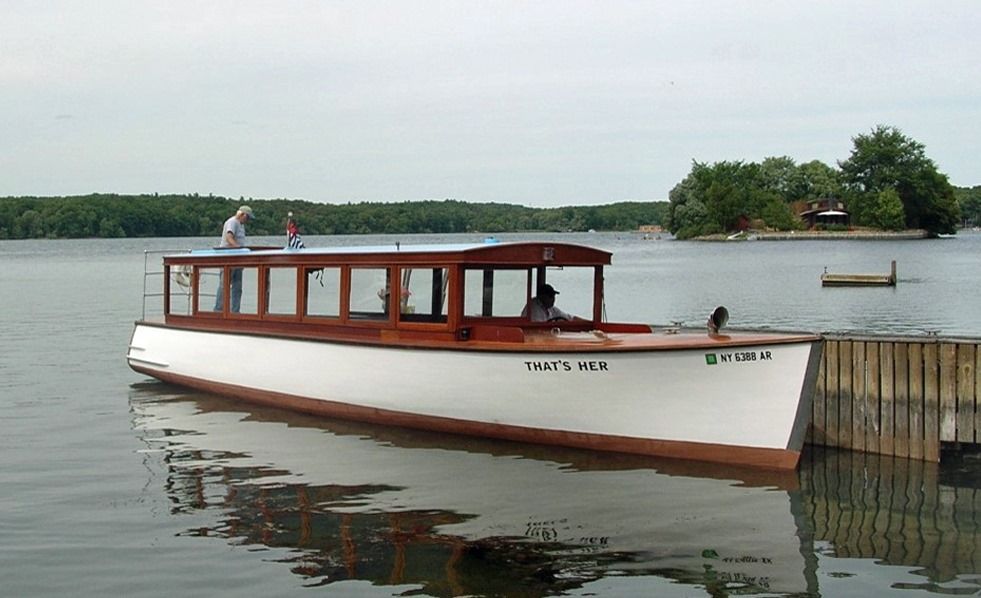
Another boat that is currently undergoing a complete restoration is the “Pat II,” which was a Thousand Islands tour boat from 1924 until 1956 when she moved to Skaneateles Lake to become a mail boat. The “Pat II” was built in Alexandria Bay by George Blount and George M. “Pat” Comstock and performed tour boat duties for various lines over the years. She was rescued from a boneyard near Seneca Lake in 2013, and the title was transferred to the Finger Lakes Boating Museum. The restoration work on “Pat II” is being performed at the museum’s Hammondsport location. Coincidentally, the “Miss Clayton II” also worked as a mail boat on Skaneateles Lake, alongside the “Pat II,” after she was retired from 1000 Islands tour duty.
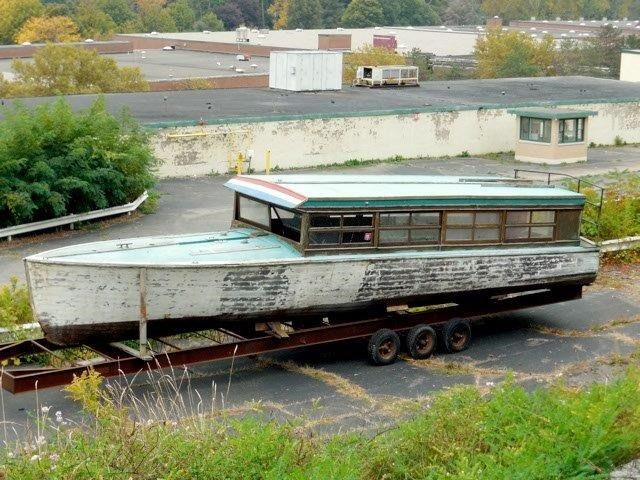
Another person working diligently, on a smaller scale, literally, to keep the spirit of the old classic Thousand Islands tour boats alive is Stephen Shay. Stephen is a passionate, life-long woodworker who now lives in Maitland, Ontario, near the St. Lawrence River. He makes wooden “folk art” items in his shop and among the nautical pieces that he creates are replicas of the old tour boats. Although Stephen’s models aren’t exact reproductions of the original boats, they certainly capture the essence of them, and there is no mistake as to what you are looking at when you see one of them.
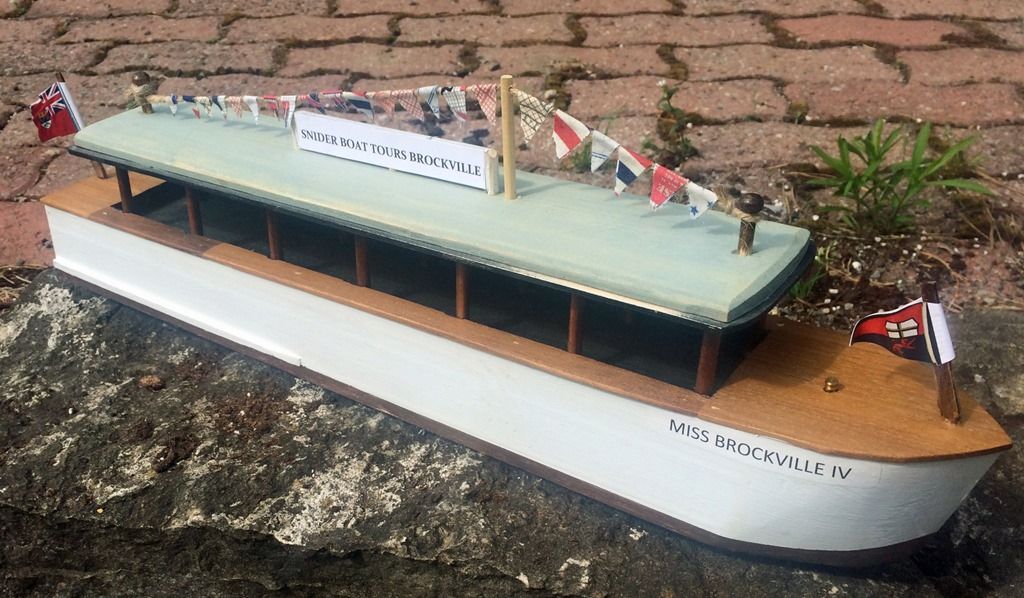
Although most of these beautiful old wooden tour boats no longer ply the waters of the Thousand Islands, they will always have a special place in the region’s history and will continue to be fondly remembered by the many people that were involved with them, in one way or another, over the years.

I am dedicating this article to the memory of Murray Elvin McLennan, a former tour boat captain with the Gananoque Boat Line. I had the pleasure of meeting with Murray at his home in Oshawa, Ontario in the spring of 2017 to talk about “the good old days” of the tour boat industry.
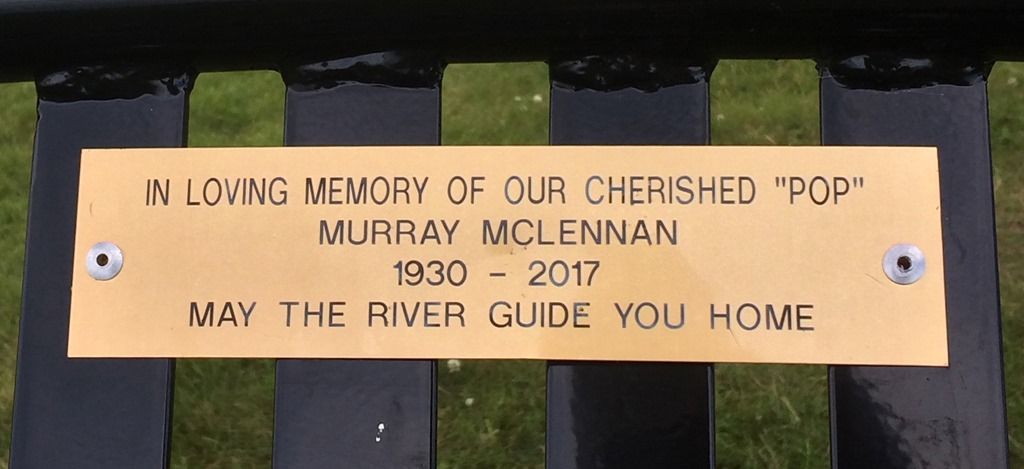
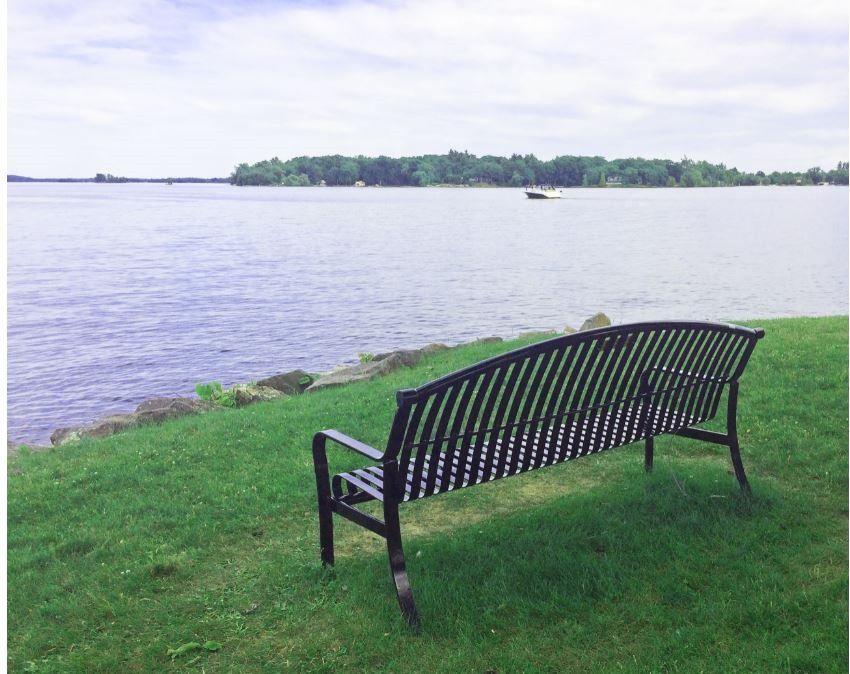
Sadly, Murray’s health issues caught up with him and he passed away in September, before I had a chance to have another visit. I am so glad that I had the opportunity to spend that one afternoon with Murray to capture another bit of the colourful history of the tour boat industry.
As a memorial to Murray, his family has placed a bench in Gananoque’s Joel Stone Park. It is situated on the south-east point of the park and faces Gananoque’s waterfront, so that whoever sits there can watch the present-day tour boats come and go. A very fitting tribute to a warm and caring “Riverman.” Thanks for the memories, Murray.
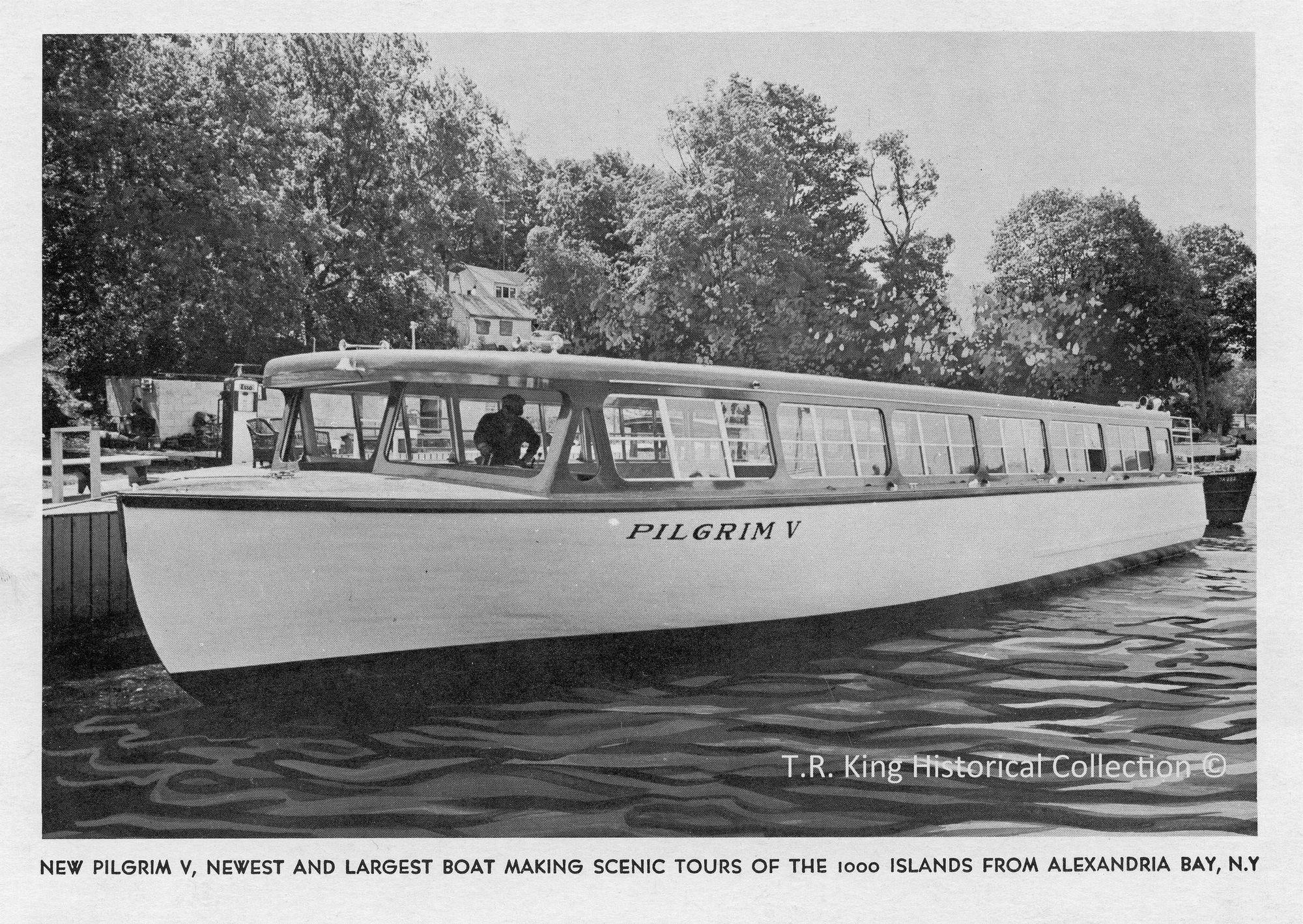
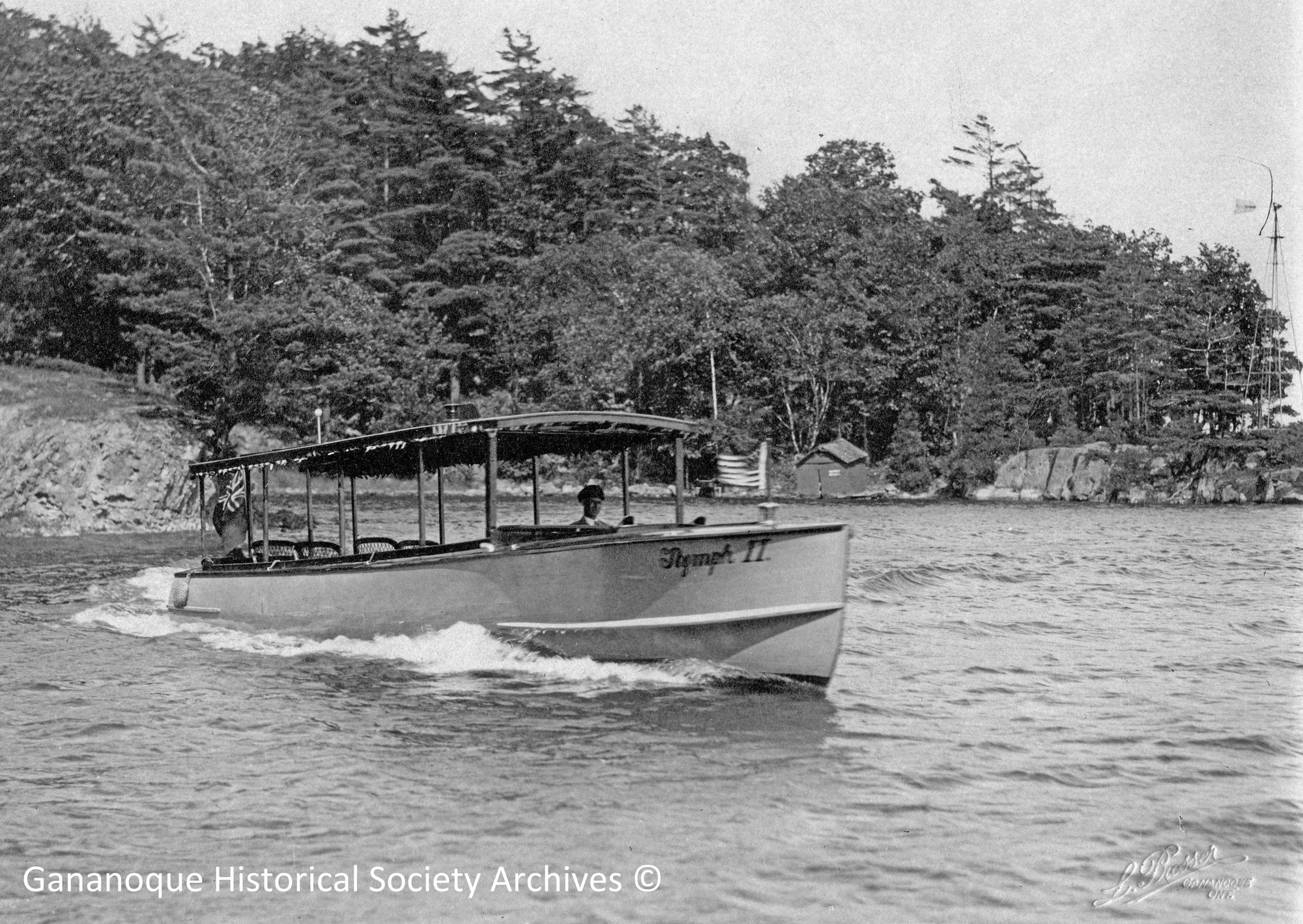
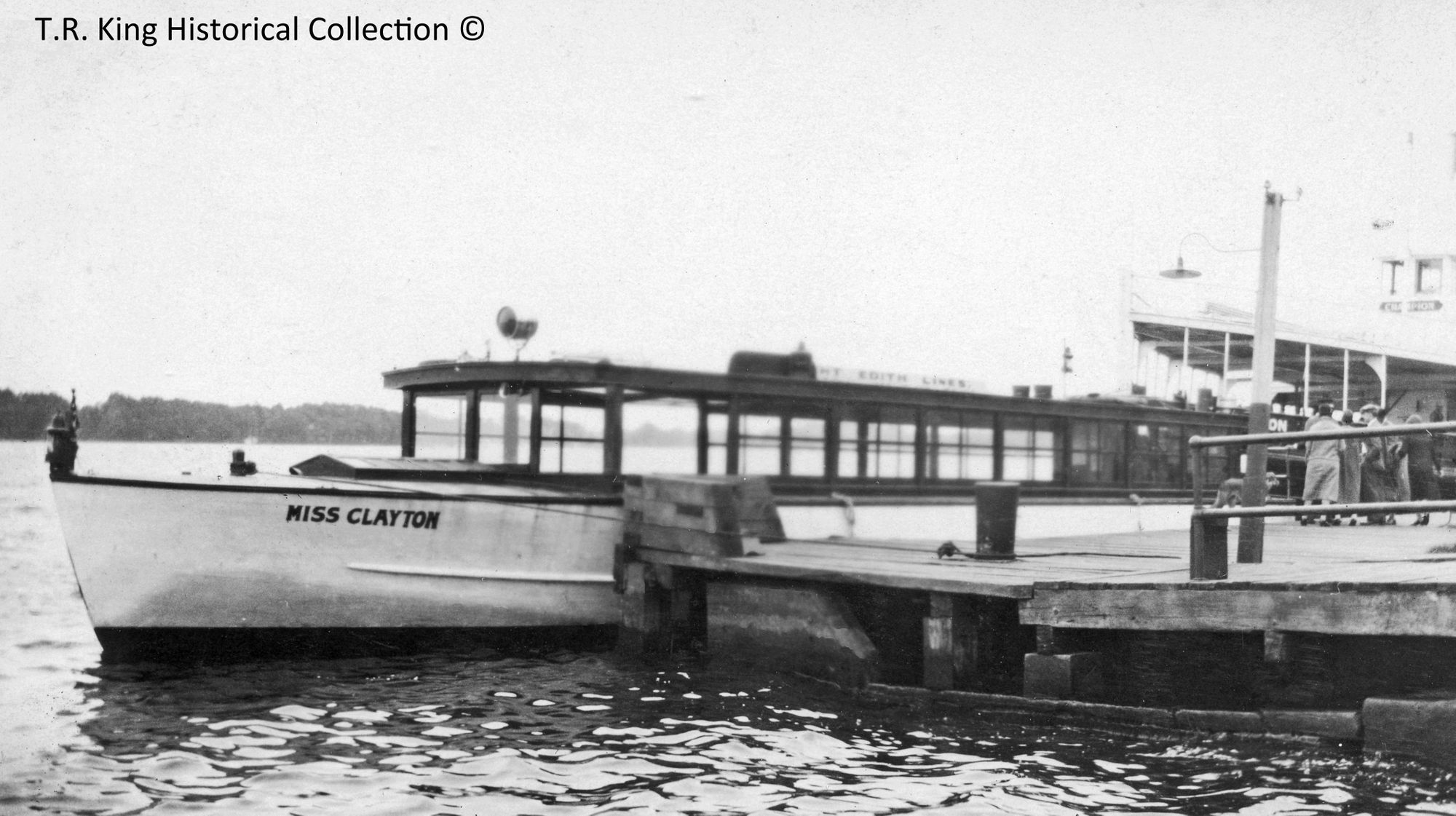


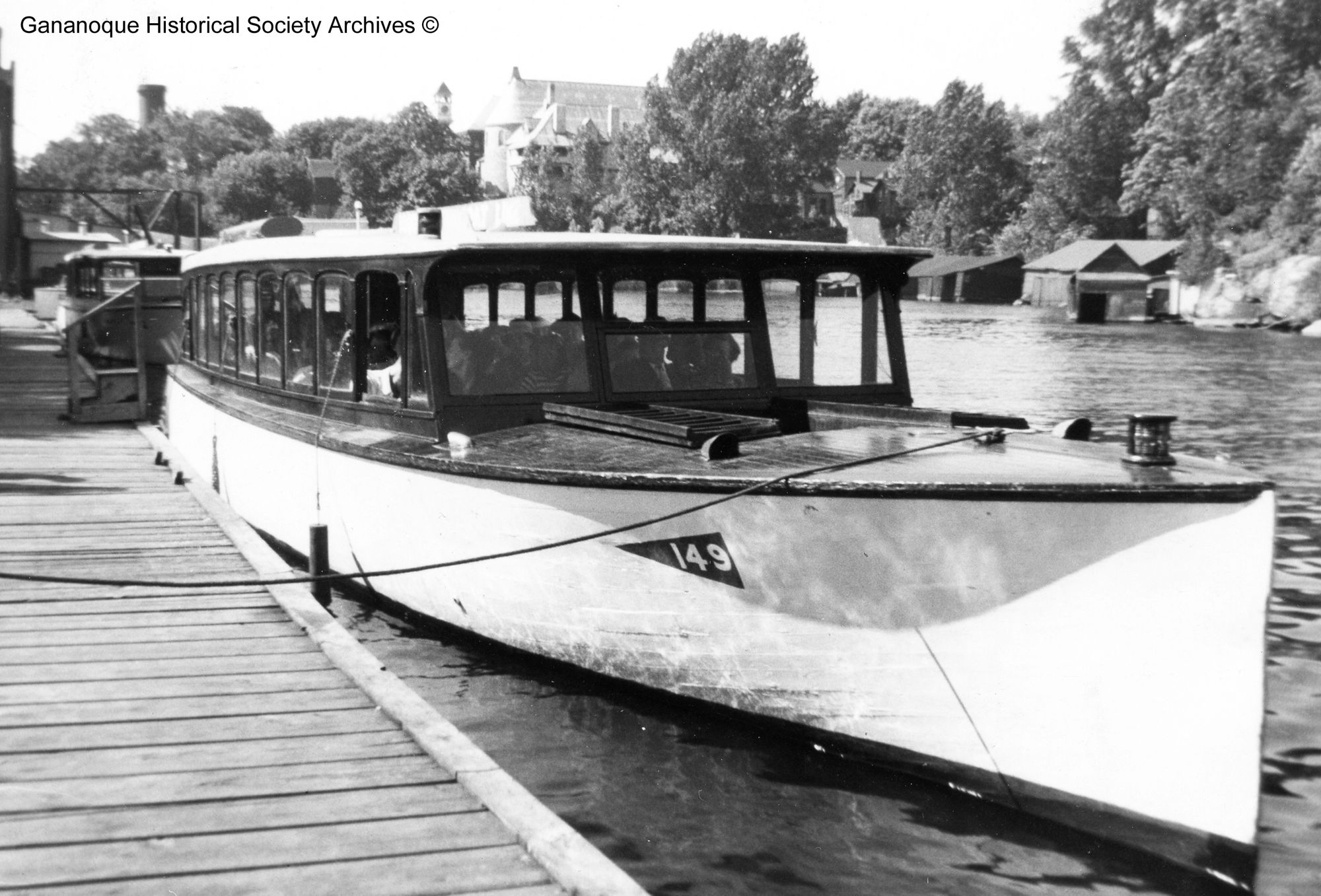
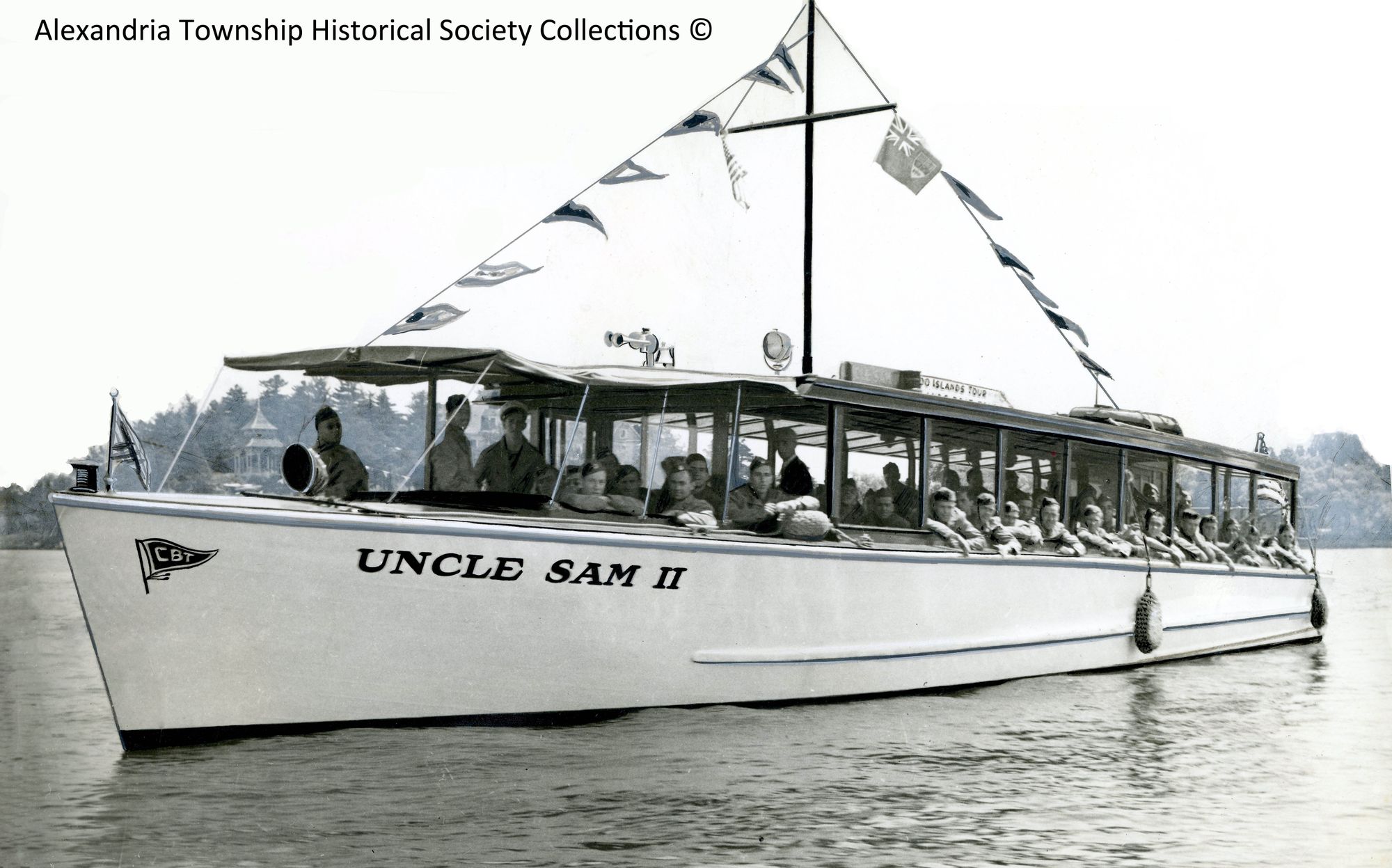

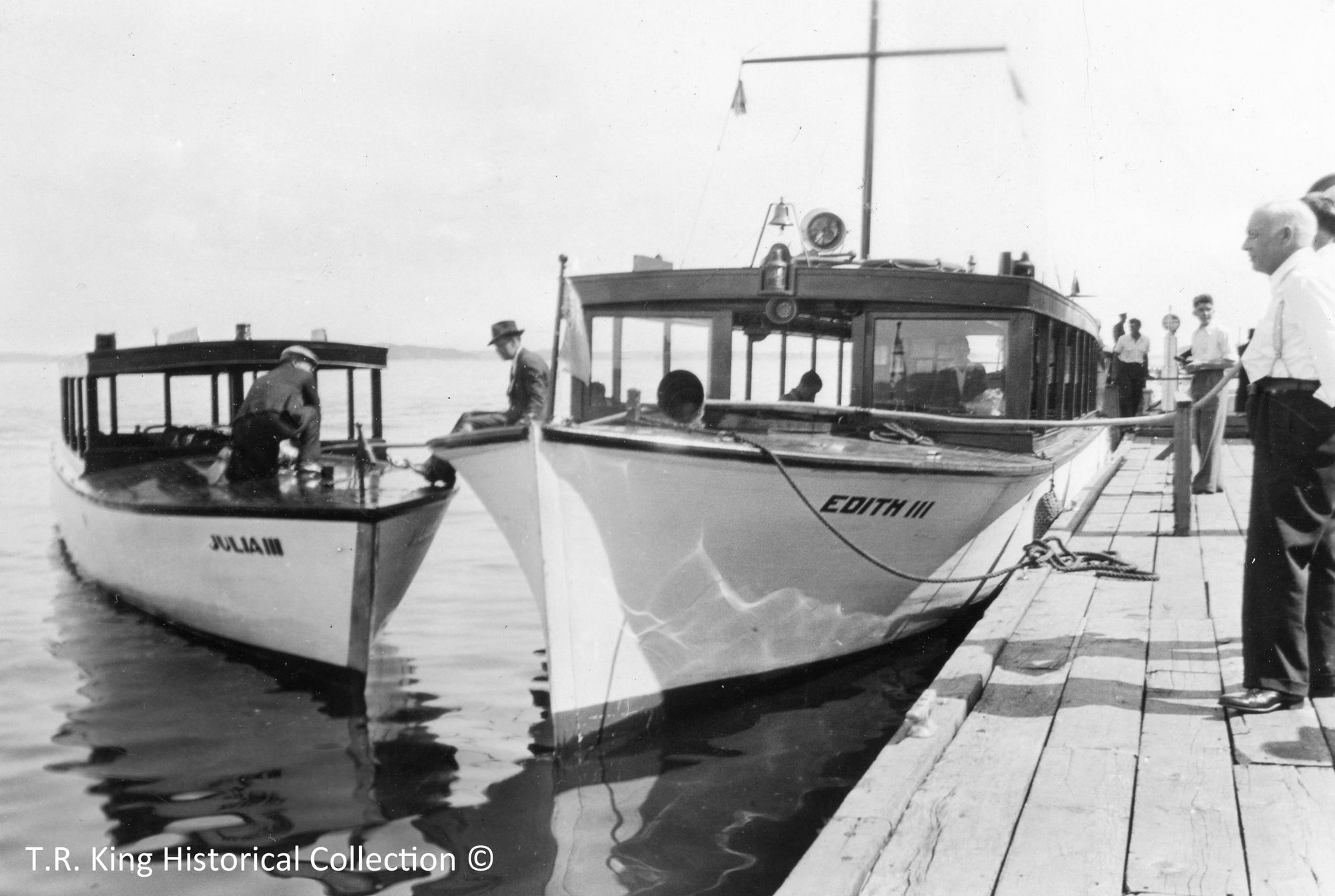
“Miss Gananoque”, “Venice”, and “Pat” were part of the 1000 Island Boat Line fleet operating out of Gananoque.
“Nymph II” was owned and operated by Fred Meggs of Gananoque.
“Miss Clayton” was operated by the Yacht Edith Lines and operated out of both Clayton and Gananoque.
“Spray VI”, built in Clayton in 1925 had at least twelve different owners over her lifetime.
“Sun Dance” was one of the early boats of the Gananoque Boat Line. Built in Gananoque by Jack Malette, she was later renamed “Island Wanderer III”.
Originally named
The “Miss Brockville” was part of the Snider 1000 Island Boat Tours fleet and operated out of Brockville.
The “Julia III” and the “Edith III”, both operating out of Clayton, showed the difference in size between some of the tour boats.
The “Overland III” and the “New Niagara” were owned by Capt. C.S. Thomson and were among the earliest commercial tour boats operating out of Alexandria Bay.
“The New Jean” was built by Ray Andress and later became part of the 1000 Island Boat Line operating out of Gananoque.
“Pilgrim V” was the flagship of the Pilgrim Boat Tours line and was one of the larger single deck wooden tour boats built. She later became “Uncle Sam VIII” and “Miss Clayton IV”.
The Gananoque Boat Line’s “Lynda VIII”, in her red, green and white colour scheme, was a very familiar sight throughout the 1000 Islands for many years.
“Miss Gananoque”, “Venice”, and “Pat” were part of the 1000 Island Boat Line fleet operating out of Gananoque.
“Nymph II” was owned and operated by Fred Meggs of Gananoque.
“Miss Clayton” was operated by the Yacht Edith Lines and operated out of both Clayton and Gananoque.
“Spray VI”, built in Clayton in 1925 had at least twelve different owners over her lifetime.
“Sun Dance” was one of the early boats of the Gananoque Boat Line. Built in Gananoque by Jack Malette, she was later renamed “Island Wanderer III”.
Originally named
The “Miss Brockville” was part of the Snider 1000 Island Boat Tours fleet and operated out of Brockville.
The “Julia III” and the “Edith III”, both operating out of Clayton, showed the difference in size between some of the tour boats.
The “Overland III” and the “New Niagara” were owned by Capt. C.S. Thomson and were among the earliest commercial tour boats operating out of Alexandria Bay.
“The New Jean” was built by Ray Andress and later became part of the 1000 Island Boat Line operating out of Gananoque.
“Pilgrim V” was the flagship of the Pilgrim Boat Tours line and was one of the larger single deck wooden tour boats built. She later became “Uncle Sam VIII” and “Miss Clayton IV”.
The Gananoque Boat Line’s “Lynda VIII”, in her red, green and white colour scheme, was a very familiar sight throughout the 1000 Islands for many years.
Tom King and his wife Marion have lived in Milton, Ontario for the past 30 years, where they both worked and raised their family of three children; Kris, Mike and Becca. Tom still has a strong attachment to the Thousand Islands, having grown up in Gananoque and being a “river rat” from a very early age. The family tries to return to the islands every summer and for the past several years have been renting a cottage on Sampson (a.k.a. Heritage) Island, just out from Gananoque.
This is Tom’s 19th article for TI Life and he is working on his 20th! He is our “go-to” historian for Tour Boat history, and he has once again hit the mark. Be sure to see all his articles here – but watch out for the dock spiders!
Comments posted on old TI Life:
Comments
Comment by: Brian Johnson
Left at: 6:08 PM Monday, January 14, 2019
Thank you so much Tom!! This is certainly a 'walk back' in time, visiting so many of the boats I remember and worked on. Especially the many others that I never knew! Just GREAT!
Comment by: Mary Politis
Left at: 7:01 AM Tuesday, January 15, 2019
Ver nicely written. A real history of tour boats and their usage even as mail boats late.
Comment by: Bud Andress
Left at: 2:32 PM Tuesday, January 15, 2019
Tom, have very much enjoyed your articles and this one is no exception. I must correct something however which I found in the picture grouping at the bottom of the article. “The New Jean” was built by my grandfather Ray Andress, not his first cousin in Rockport, Ed Andress. The New Jean poses for its photograph by Prosser of Gananoque between Bostwick and Wyoming Islands in the Wanderers Channel of the Admiralty Group. On board in this 1928 photo are Ray Andress, Don Lang, and Bill Latimer. The line of tours was called “Andress Boat Tours”. The name “Jean” refers to Ray’s daughter Olive Jean (Andress) Stevenson, (my aunt Ollie). The boat was built on the east side of the Gananoque River, just inside the Swing Bridge, in a shop that is now apartment housing.
Bud
Comment by: Ian Campbell
Left at: 5:30 PM Tuesday, January 15, 2019
Great story about the old boats. I knew a few of them, but there are lots I did not know about. I worked on the Snider boats in Brockville as a kid one summer, around 1954. My serious involvement in the business started in 1972 when I worked for Marlin Yachts, the contractor who started building the GBL tripple-decker fleet, and later for Gananoque Boat line as one of the captains. I went into the business in 1975 as part owner of the Miss Kingston Boat Line, That vessel had originally been owned by Sam Sedgewick from Gananoque and then by Archie McLean of Kingston. We later had an Aluminum tripple-decker of our own, Miss Kingston II.
Comment by: Karen Wand
Left at: 5:38 PM Tuesday, January 15, 2019
Excellent article Tom, I really enjoyed the history of the tour boats. I falsely identified New Jean recently on a facebook page recently, I'm getting old I guess and getting confused about those old wooden boats. Your story inspired me to drag out my notes and take another look at them.
It was nice to see Megg's Nymph, any idea where that photo was taken? Seems to me it could be below the Bluff.
Keep up the great stories!
Comment by: Lenore George Baudoin
Left at: 5:45 PM Tuesday, January 15, 2019
My father William Kendall George piloted for years for the American Boat-line
It’s so cool to read this article, brings back so many memories
Thank you !!
Comment by: Tom King
Left at: 6:59 AM Wednesday, January 16, 2019
Thank you for the correction Bud, along with the additional information about Ray Andress and the "New Jean".I always wondered where the name "Jean" originated. According to my notes, Ray's dad, George, built the original "Jean". Ed Andress of Rockport built the early "Elva" tour boats and operated them under the company name "Andress Scenic Tours". The Andress boatworks in Rockport built several other tour boats including the Lynda VIII and the Miss Brockville V.
Comment by: Tom King
Left at: 7:05 AM Wednesday, January 16, 2019
Karen, I think the photo of the Nymph II was definitely taken in the bay below Bluff Park. Fred Meggs had his boathouse just below the bluff and kept his tour boat in there. It's not visible on the picture in the article but there is an "L. Prosser" watermark on the bottom right hand corner of the picture.
Comment by: Mike Fesko
Left at: 10:38 AM Wednesday, January 16, 2019
Tom, - AWESOME history and I thank you so much for the time you put into it. You're speaking to my heart. I heard the "painted line on the bottom" story on the Adonis as a kid back in the 60's. The part about "the “American Adonis” was converted from a surplus U.S. Navy crash boat" - I'd always heard that story and a version that it was a PT boat, but it's been hard to confirm. Thanks for setting that straight.
If you or anyone is interested in the Paasch-built boats that formed the shiny double decker fleet of the ABL, I have an update on where they all are now, at https://www.1000islandssteelking.com/where-are-the-old-1000-islands-tour-boats/
Please keep your wonderful articles coming, you do great work!
Mike
Comment by: Cary Brick
Left at: 12:16 PM Wednesday, January 16, 2019
I believe one of the Clayton aluminum double-deckers ended up in Maryland--at either Annapolis or Baltimore. I recall being on it many years ago---perhaps 30+---with my young daughters and commenting to the captain that it looked like one that toured out of Clayton years before that. He said it was one and the same and that he was the Clayton captain as well. Perhaps another reader can add to the story..
Comment by: Debbie
Left at: 1:37 PM Wednesday, January 16, 2019
We took the Jungle Cruise in Ft. Lauderdale 3 years ago and the co-captain was a captain of one of the cruise ships in Clayton during the summer months and did the Ft. Lauderdale boat in the winter. Didn't catch his name but enjoyed sharing our stories about the 1000 Islands!
Comment by: Deane Parkhurst
Left at: 9:03 AM Friday, January 18, 2019
I remember those wonderful old boats all so well. In my, long ago, kid years at 1000 Island Park we'd always wait, with inner tubes in hand, for the tour boats to come by then enjoy a brief "wake" ride. Back then the tours from Alexandria Bay would circle Wellesley and Hill islands, ending back where they started. Great story. .
Comment by: Peter Johnston
Left at: 12:40 PM Tuesday, January 29, 2019
A real treat for an ex-skipper to see many of the vessels that I saw daily in the seasons 1974-76. Working as captain for Rockport Boat Line and mate for Miss Kingston I learned many of the old quips, one liners and outright whoppers that were a staple of the tour commentary. A favourite groaner was a pun about Knobby Island (hope the name is correct) that was joined to another small rocky islet by a stone footbridge. It went like this: Knobby Island, summer residence of a dentist from Rochester New York. If you're considering becoming a patient of the good dentist, you light like to look closely at this example of his bridgework.
Also it's nice to see a comment from Ian Campbell. Nice to know you're still kicking, Stu.


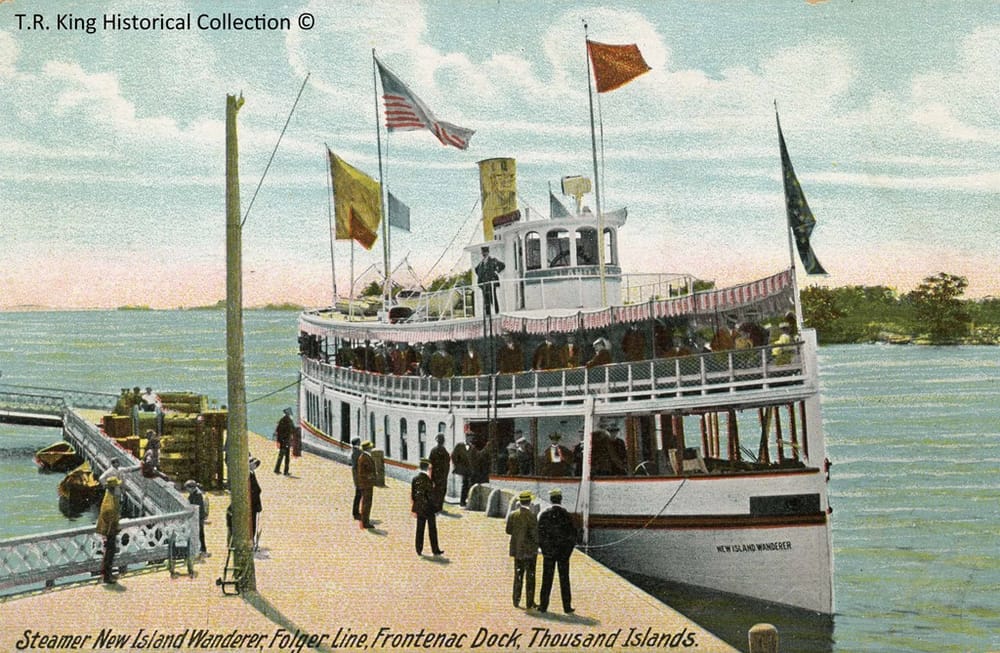



Please click here if you are unable to post your comment.